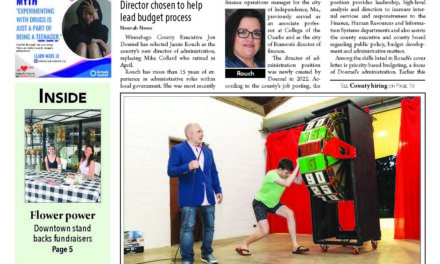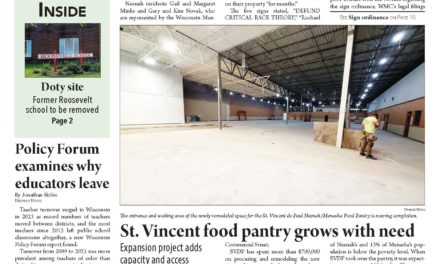Residents get extra push to test home for radon
Neenah News
National Radon Action Month is underway to raise awareness to residents who can get a discounted test kit that can tell them if their home has high levels of the dangerous gas.
“About one out of every 10 homes in Wisconsin has high radon levels. Any home, whether old, new, with or without a basement can have radon,” said Gov. Tony Evers in making the proclamation.
“Since you cannot smell, taste, or see radon, the only way to know if you have high radon levels is to test for it. Test kits are available to help protect you and your family from radon exposure.”
Radon exposure is the second leading cause of lung cancer overall and leading cause of lung cancer for non-smokers. Exposure to radon gas is one of the major contributors to lung cancer nationally.
Morgan Peterson, environmental health specialist for the Winnebago County Health Department, said last January was slower for radon kit purchases due to COVID and public buildings being closed but expects this month to see a resurgence of interest with the annual $5 kit promotion targeted to this time of year.
“Winter is the best time to do the radon tests because all of the windows are closed in your home,” she said. “We sell a lot in January.”
Do-it-yourself, short-term (48-hour) kits are available this month at half the regular $10 cost from the Health Department located at 211 N. Commercial St. between 8 a.m. and 5 p.m. Monday through Friday. For more information, contact (920) 727-2894 or health@co.winnebago.wi.us.
While the average radon rating for U.S. homes is 1.3 (pCi/L, or pico Curies per liter of air), according to the Winnebago County Health Department, the county’s test average from 2006-2016 was higher at 6.0 pCi/L. More than half the results in Winnebago since 2009 have been above the Environmental Protection Agency’s recommend level of 4.0pCi/L or higher.
There are more than 100 radon mitigation contractors in Wisconsin certified to install mitigation systems if elevated radon levels are found. Thousands of systems are installed in Wisconsin homes each year.
“Radon is found all over Wisconsin and testing for it is an easy, low-cost way to help save a life, or many lives,” said Dr. Jasmine Zapata, Wisconsin Department of Health Services chief medical officer for community health.
Radon causes more lung cancer among non-smokers than second-hand tobacco smoke. An estimated 21,000 lung cancer deaths per year among non-smokers are caused by radon, according to the U.S. Environmental Protection Agency and Surgeon General.
Find more general information on radon and programs at lowradon.org.






